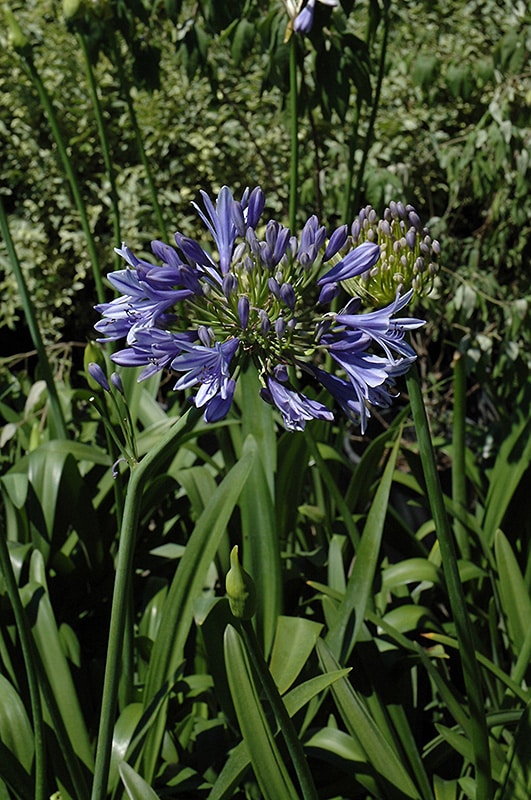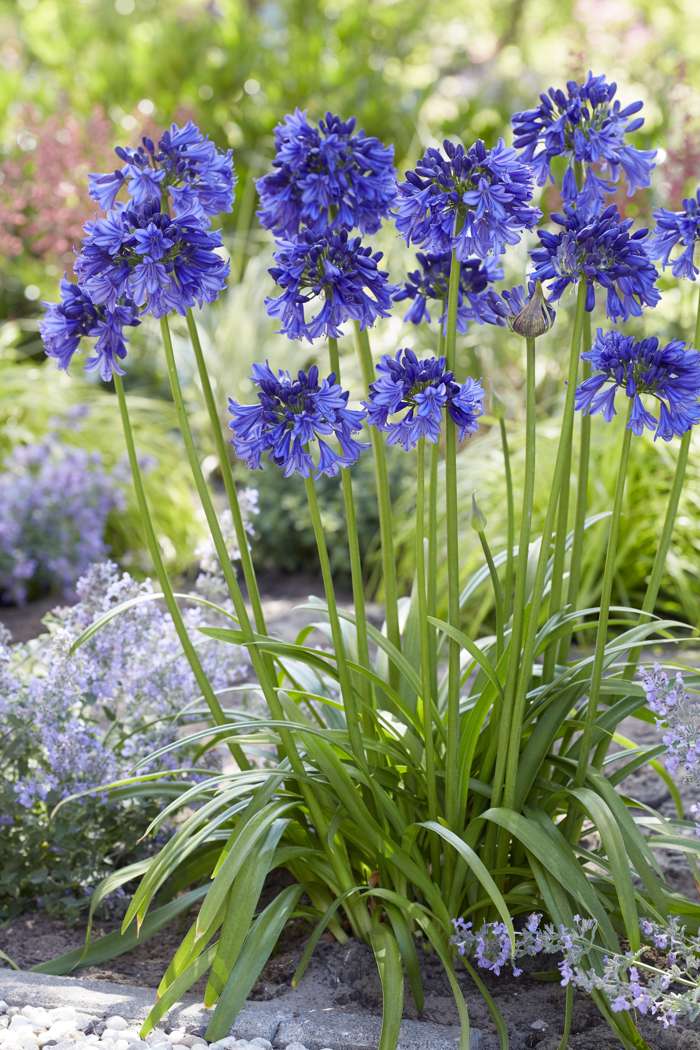Agapanthus Varieties: Selecting the very best for Your Landscape
Agapanthus Varieties: Selecting the very best for Your Landscape
Blog Article
Unleashing the Secret to Effective Agapanthus Cultivation: Advice for a Flourishing Yard
In the realm of horticulture, cultivating agapanthus efficiently requires a tactical technique that incorporates various aspects of plant care. With cautious attention to information, one can unlock the tricks to supporting these magnificent flowers, leading to a yard that thrives with charm and vibrancy. By recognizing the nuances of agapanthus farming, one can develop an atmosphere where these plants prosper and grow generously. In the adhering to discussion, we will certainly explore crucial suggestions and methods that will direct you in the direction of a flourishing agapanthus yard, using insights right into ideal practices, dirt problems, sprinkling techniques, and much more.
Growing Agapanthus: Best Practices
When planting Agapanthus, proper soil prep work is crucial for ensuring successful development and growth of these beautiful flowers. Agapanthus, typically referred to as Lily of the Nile or African lily, grows in well-draining dirt with a somewhat acidic to neutral pH level - Agapanthus. Prior to growing, it is essential to change heavy clay soils with organic matter such as compost or peat moss to enhance drain and supply crucial nutrients for the plants
To grow Agapanthus, pick a location that receives complete sunlight to partial color, as this will certainly promote healthy development and abundant blooming. Dig a hole twice the diameter of the plant's root sphere and position the Agapanthus at the exact same deepness it was previously growing. Delicately backfill the hole with soil, pushing down strongly to get rid of any kind of air pockets around the roots.
Water the freshly grown Agapanthus completely and continue to keep the soil evenly moist, especially throughout the plant's energetic growing season. Agapanthus. Applying a well balanced plant food once a month can additionally sustain the plant's growth and flowering. By complying with these ideal practices for planting Agapanthus, you can create a stunning display screen of these exciting flowers in your yard
Perfect Dirt Conditions for Agapanthus
For optimal development and blooming success of Agapanthus plants, making certain the soil problems are perfect is crucial. Agapanthus likes dirt that is rich in nutrients, so integrating a well balanced fertilizer throughout the growing season can advertise healthy development and vibrant flowers.

Watering and Fertilizing Tips
To make sure healthy and balanced development and lively flowers, appropriate watering and fertilizing techniques are important for successful Agapanthus farming. Agapanthus plants profit from routine watering, particularly throughout the growing season.
When it involves feeding Agapanthus, a well balanced fertilizer with equal parts nitrogen, phosphorus, and potassium can be used in the spring to advertise healthy development and flowering. Slow-release plant foods are excellent for supplying nutrients progressively over an extended duration. Stay clear of over-fertilizing, as this can cause excessive vegetation growth at the expenditure of flowers.
Additionally, including organic issue like compost right into the soil can enhance nutrient degrees and enhance dirt structure, helping in the total health and wellness of the Agapanthus plants. By complying with these watering and fertilizing pointers, gardeners can ensure their Agapanthus plants grow and create spectacular display screens of flowers.
Pruning and Deadheading Methods
Proper trimming and deadheading techniques play a critical duty in preserving the wellness and looks of Agapanthus plants, complementing the essential methods of watering and fertilizing for successful farming. Pruning Agapanthus involves removing invested flower heads, yellowing or dead fallen leaves, and overall shaping of the plant to promote far better growth. Deadheading, the procedure of removing discolored flowers, not only boosts the plant's appearance yet also motivates more blooming.
When deadheading Agapanthus, it is suggested to snip off the blossom stem at the base making use of sharp, clean shears. This procedure reroutes the plant's energy from seed manufacturing back right into origin and vegetation growth, advertising a healthier and more durable plant. Normal deadheading can extend the flowering duration of Agapanthus and prevent self-seeding, which can cause congestion.
In regards to pruning, Agapanthus normally take advantage of a light trim after flowering to clean the plant and urge fresh growth. Reducing the invested blossom stems and getting rid of site here any dead or broken vegetation helps maintain the plant's vigor and general look. However, it is necessary to avoid cutting into the crown of the plant, as this can deteriorate its wellness.

Protecting Agapanthus From Pests and Diseases
Carrying out reliable parasite and condition management techniques is important to securing the health and wellness and vigor of Agapanthus plants in growing. Agapanthus are normally sturdy plants, however they can still succumb different insects and diseases if not correctly cared for. One usual parasite that influences Agapanthus is the Agapanthus borer, a caterpillar that passages into the plant, causing damage to the leaves and blossoms. To stop problems, normal assessment of the plants is crucial. If borers are spotted, they can be manually gotten rid of, or insecticidal soap can be made use of as a control measure.
In enhancement to pests, Agapanthus are at risk to illness such as root rot and fungal fallen leave areas. These issues can usually be protected against by making sure appropriate water drainage and avoiding overwatering. If signs of illness appear, influenced components of the plant need to be immediately eliminated to stop more spread. Fungicides may additionally be used as a therapy measure, adhering to the manufacturer's directions carefully. By staying vigilant and attending to pest and illness concerns quickly, garden enthusiasts can help their Agapanthus grow and thrive.

Final Thought
In verdict, effective cultivation of agapanthus requires appropriate growing techniques, excellent dirt problems, ample watering and feeding, regular trimming and deadheading, and security from illness and bugs. By complying anchor with these ideas and methods, gardeners can ensure a prospering yard loaded with beautiful agapanthus blooms. Agapanthus. Remember to maintain regular care and interest to detail to advertise the health and wellness and durability of these magnificent plants
When growing Agapanthus, correct dirt preparation is necessary for making sure effective growth and development of these lovely flowers.Water the newly grown Agapanthus extensively and proceed to maintain the soil evenly moist, specifically throughout the plant's energetic expanding period.For ideal growth and growing success of Agapanthus websites plants, making certain the soil problems are excellent is critical. When hair transplanting or growing Agapanthus, make sure the soil is well-prepared to provide the essential foundation for the plants to develop themselves effectively. One common parasite that influences Agapanthus is the Agapanthus borer, a caterpillar that tunnels into the plant, creating damage to the leaves and blossoms.
Report this page